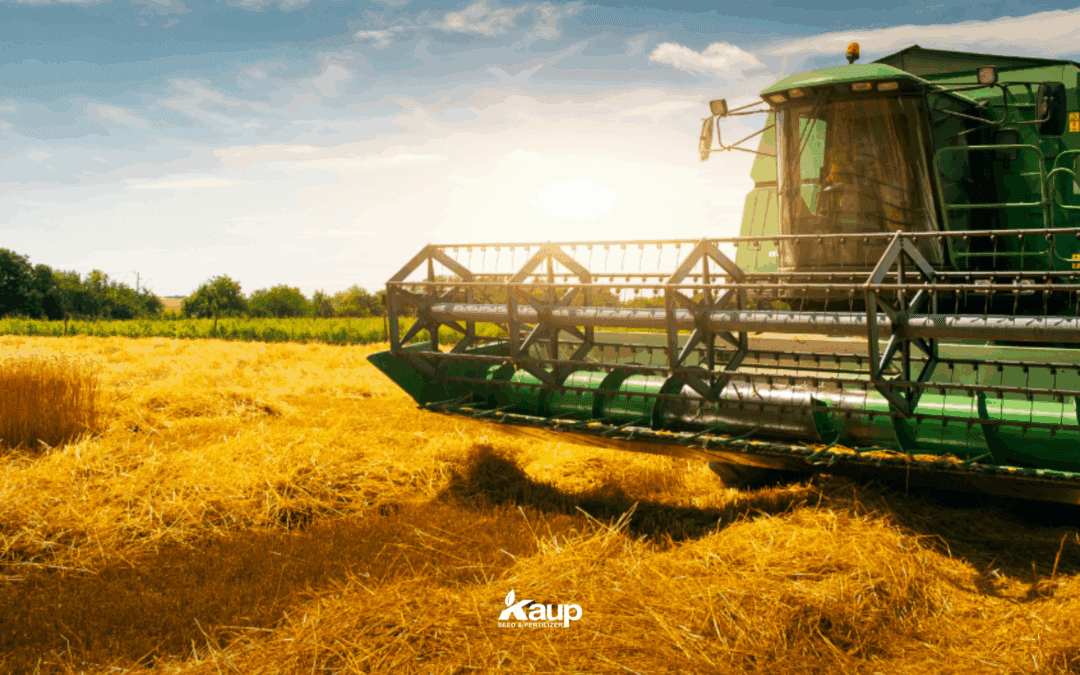An Agronomist’s Guide to August Decisions That Still Impact Yield
As we turn the calendar to August, harvest might feel close, but there’s still a lot of season left to manage. From pest pressure to crop maturity, what happens this month can either preserve or reduce the return on everything you’ve invested so far.
Here are four key areas our agronomists are focusing on, and why they remain important as we head into harvest.
1. Keep Irrigating, But Know When to Stop
August heat can push crops to their limits, especially during the late reproductive stages. If you’re irrigating, now’s the time to balance water use with crop demand.
Corn:
- Continue watering until the black layer is visible within 10–14 days.
- Check soil moisture at the root zone, not just the surface.
- Overwatering late can delay drydown and increase harvest costs.
Soybeans:
- Beans still benefit from water through R6 (full seed).
- Fields with dense canopies and pod fill need close monitoring.
Kaup Tip: If you’re using soil moisture probes, we’ll help interpret the data and time your last irrigation pass for efficiency—not excess.
2. Scout for Late-Season Pests
Just because the crop is near maturity doesn’t mean the threat is gone. Late-season pests can reduce kernel fill, damage pods, and impact grain quality.
Key Pests to Watch:
- Corn Earworm: Damages the tips of ears and can lead to mold.
- Stink Bugs: Pierce pods and kernels, causing shriveled seeds.
Kaup Tip: We’re still out walking fields. A scouting pass now could save you a measurable loss at the scale.
3. Monitor Crop Maturity, Not Just the Calendar
Calendar dates don’t harvest crops; physiology does. That’s why we encourage growers to track actual crop progress, not just days on the calendar.
Corn:
- Watch the milk line movement toward the black layer.
- Premature drydown could signal stress or nutrient shutdown.
Soybeans:
- Yellowing from the bottom up is normal. Sudden widespread yellowing may indicate early senescence from disease or lack of moisture.
Kaup Tip: Unsure about the status of your crop? Let our agronomy team walk a few rows with you; we’ll help you make informed decisions about timing.
4. Start Your Harvest Planning
Even if you’re a few weeks from starting, now’s the time to get ahead of bottlenecks and missed opportunities.
Here’s what to consider:
- Field order: Which fields are drying down fastest?
- Bin space: Is your storage ready, or will you need to move grain fast?
- Post-harvest fertility: What will you need to replenish this fall?
- Ensure Precision Ag Tech is updated & cleared out for the following harvest.
Kaup Tip: A short harvest planning meeting now can help you finish stronger—and avoid preventable delays in the busiest season. Reach out to Kaups for any precision Ag questions.
Your Acres. Your Finish.
We know you’ve invested in this crop from the start. Let’s make sure the final weeks deliver what you’ve worked for.
Talk to a Kaup agronomist today about irrigation, scouting, or harvest prep.
Let’s grow strong through the finish line.
— The Kaup Seed & Fertilizer Team

